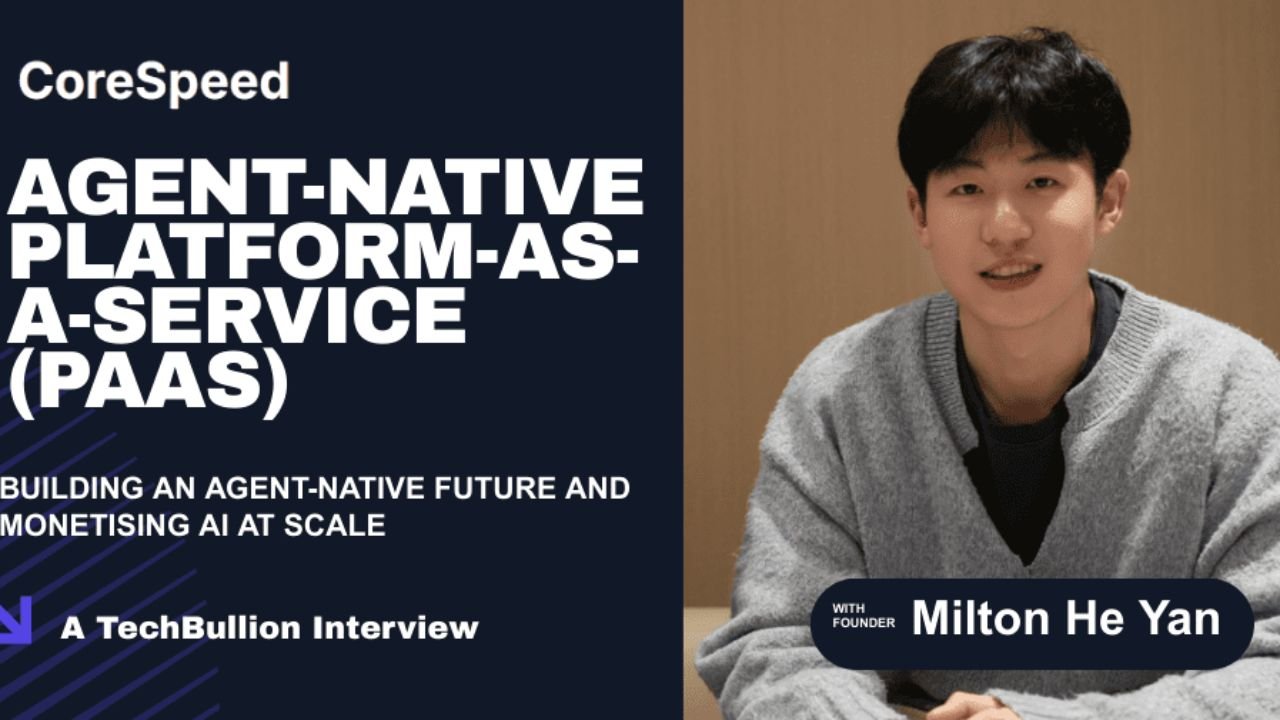Milton He Yan, the founder of CoreSpeed, is leading the creation of an agent-native platform-as-a-service (PaaS) — designed to help developers move AI agents from prototype to full production faster than ever before. With a background in hardware building and deep knowledge of scalable systems, Milton built CoreSpeed to solve one of AI’s biggest challenges: deploying agents efficiently at scale.
Backed by Baidu Ventures and Monad Ventures, CoreSpeed combines its open-source Zypher SDK with a powerful runtime system, helping developers monetize their AI agents within days instead of months. The company aims to redefine AI infrastructure for a world where intelligent agents can reason, plan, and act seamlessly.
Meet Milton He Yan
“I’ve been building things since I was 12,” says Milton. “My first creation was a radio.”
He began his journey in hardware before moving into software, realizing that software offered faster innovation and easier commercialization.
That mindset led to CoreSpeed — a platform that helps developers quickly scale their AI agents. With its open-source Zypher SDK and enterprise runtime, CoreSpeed.io, developers can turn ideas into production-ready agents in just days. Their project DeckSpeed even reached #1 on Product Hunt’s monthly leaderboard after only two weeks of development.
How CoreSpeed Began
The idea for CoreSpeed started in late 2024, when Milton’s team built two products — Keting and Zhizhi — that turned text into podcasts using AI agents.
While building these tools, the team realized something important: creating agents was easy, but deploying them at scale was not. The real problem wasn’t in training AI models — it was in the infrastructure that supported them.
Earlier experience from a successful VPN project, which generated over $60,000 in revenue, gave the team the technical skills to design high-performance systems. That knowledge became the foundation of CoreSpeed — a platform built to handle scale, speed, and reliability for AI agents.
What Does “Agent-Native” Really Mean?
Traditional cloud systems weren’t made for AI agents. They have container limits, poor long-running connection support, and can’t manage the constant reasoning and interaction AI agents need. Developers end up stacking multiple orchestration tools to make things work, adding unnecessary complexity.
CoreSpeed’s agent-native infrastructure solves that. Each user gets an isolated container that runs independently, with fast startup times, dynamic resource management, and user-level routing.
In simple terms: traditional infrastructure was made for apps — CoreSpeed is made for intelligent agents.
The Zypher SDK: Faster Development for Everyone
The Zypher Agent SDK helps developers build AI agents directly on their desktop. It removes the hardest parts of agent creation — managing tools, code organization, and version control.
Instead of writing long workflows, developers can drop in tools, let Zypher handle automation, and edit specific parts of the code without breaking anything else. Zypher even includes checkpoint management, like Git for agents, allowing version control and safe rollbacks.
At hackathons in San Francisco, both new and experienced developers have built production-ready agents in record time using Zypher. Milton explains, “Non-CS users can build with Zypher easily, but developers with technical training can unlock its full power.”
Monetizing Agents in Days, Not Months
Traditionally, after building an AI agent, developers must manually set up logins, payments, and deployment — a process that can take weeks.
CoreSpeed changes that. Once a developer builds and deploys an agent with Zypher, CoreSpeed automatically connects it to authentication, payment, and publishing systems through the CoreSpeed Store.
The Store is more than just a directory — agents can also discover and interact with other agents, creating a networked ecosystem where both people and AI can transact.
That’s why CoreSpeed can claim developers can monetize in days, not months.
Scaling Thousands of Agents Seamlessly
CoreSpeed’s system supports massive scalability. Most traditional setups only allow a few containers to serve all users, but CoreSpeed gives each user their own container.
So whether there are a hundred or a million users, the system scales automatically — each with secure isolation, stable performance, and built-in billing and monitoring.
Embracing Open Standards for a Connected AI World
CoreSpeed supports open protocols like MCP and A2A, which make it easier for different AI agents to communicate and share tools.
This focus on interoperability ensures that CoreSpeed’s agents can operate across ecosystems, paving the way for a true “AI network economy.”
Innovative Use Cases Beyond DeckSpeed
One standout example is a team of former Blizzard developers who used Zypher to build a “Cursor for Unity.” With a simple prompt like “add lighting and shadows,” the AI agent updates game elements directly in Unity — a process that normally takes hours.
CoreSpeed is also gaining traction in industries like architecture (CAD/BIM), media production, and 3D design. The platform’s flexibility makes it ideal for creative and technical workflows that demand fast, intelligent automation.
Looking Ahead: The Next 12–18 Months
CoreSpeed plans to continue improving Zypher and its PaaS while hosting more global hackathons to attract new developers. The company’s mission is to create more “Cursor Moments” — game-changing agent tools that redefine productivity across industries.
The Future of AI Agents
Milton believes the next wave of AI will be driven by “deliverable-grade” agents — ready-to-use intelligent systems that work in specialized areas.
“Our goal is to make every improvement we develop at CoreSpeed directly benefit all the agents built on our platform,” he says. “We’re not just infrastructure — we’re the engine driving the entire agent ecosystem forward.”

